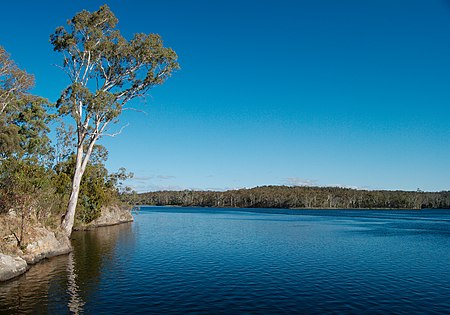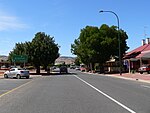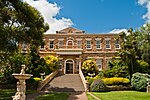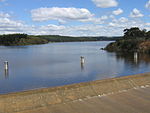Hundred of Barossa
Hundreds of South AustraliaUse Australian English from August 2019

The Hundred of Barossa is a cadastral unit of hundred in South Australia in the northern Adelaide Hills. It lies west of the Barossa Range at the south end of the Barossa Valley and is bounded on the north and south by the North Para and South Para rivers, respectively. It is the most northern of the eleven hundreds of the County of Adelaide and was named in 1846 by Governor Frederick Robe after the Barossa Range. The principal towns within the hundred are Williamstown, Lyndoch, and Gawler East at the western edge. Other localities include Kalbeeba, Concordia, Rosedale, Sandy Creek, Cockatoo Valley, Barossa Goldfields, Pewsey Vale, Altona and Rowland Flat.
Excerpt from the Wikipedia article Hundred of Barossa (License: CC BY-SA 3.0, Authors, Images).Hundred of Barossa
Gods Hill Road, The Barossa Council
Geographical coordinates (GPS) Address Nearby Places Show on map
Geographical coordinates (GPS)
| Latitude | Longitude |
|---|---|
| N -34.62865 ° | E 138.879373 ° |
Address
Gods Hill Road
Gods Hill Road
5351 The Barossa Council
South Australia, Australia
Open on Google Maps







